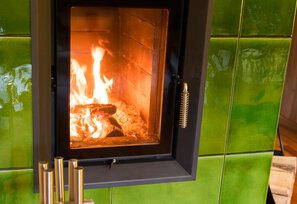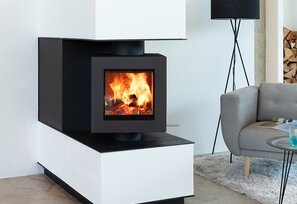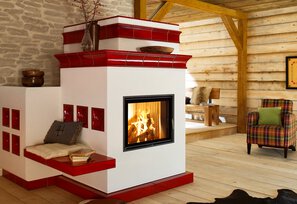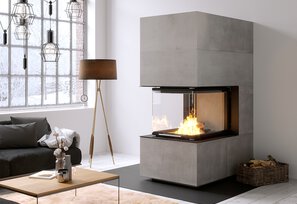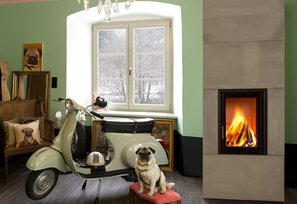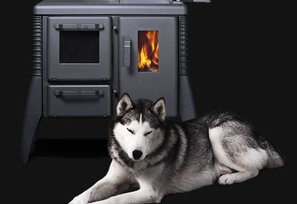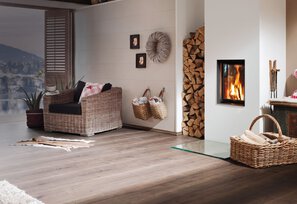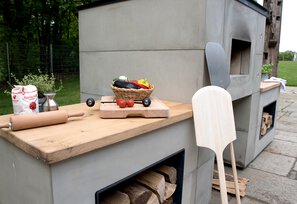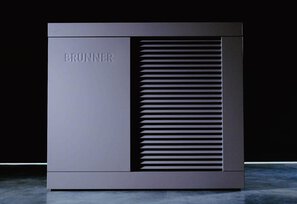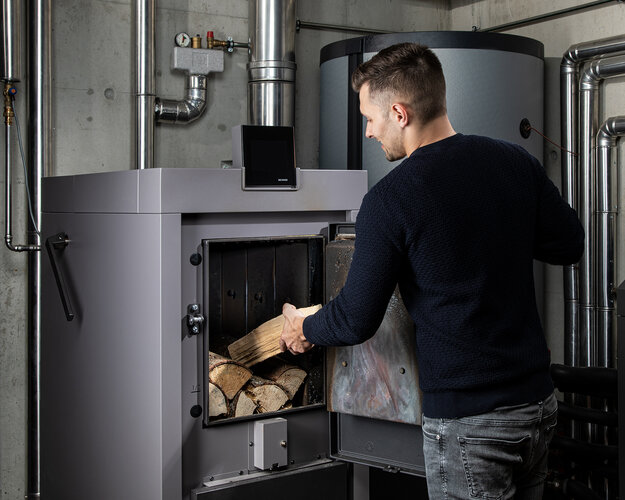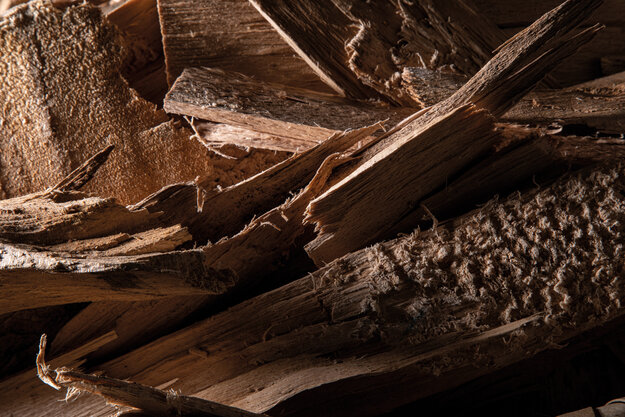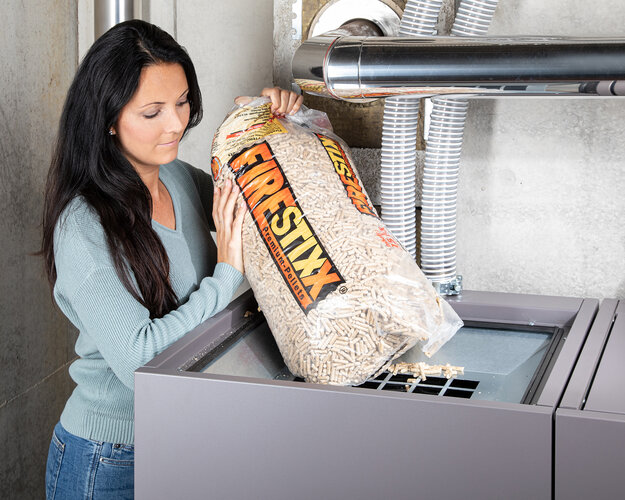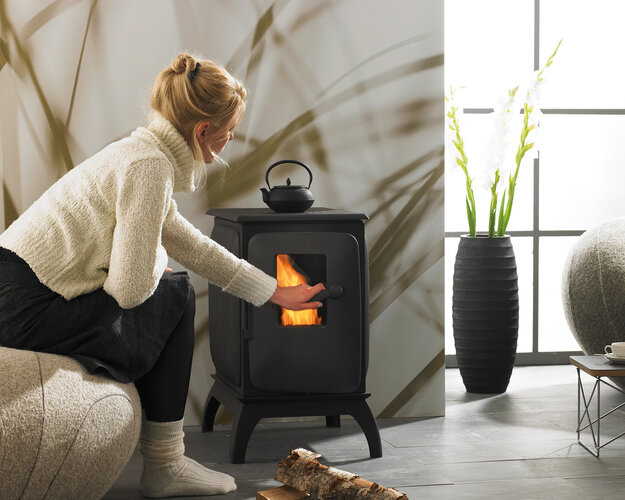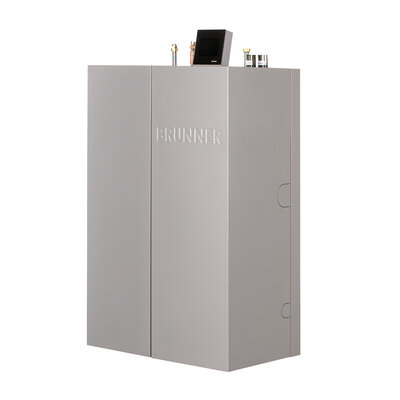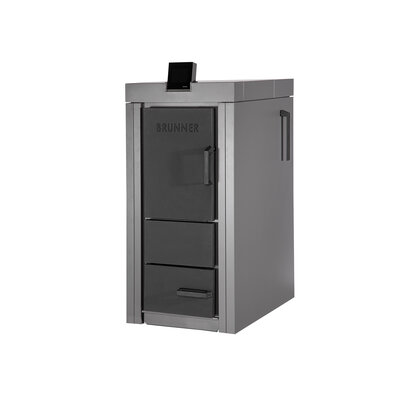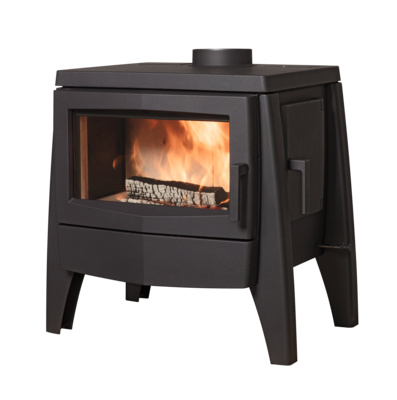Wood heating: these options are available
A wood heating system is a type of heating system that uses wood as fuel to generate heat. Wood is a renewable and sustainable resource, which makes it an attractive option for heating buildings in times of energy transition and climate protection. BRUNNER supplies innovative heating concepts for your home. There are various types of wood heating systems, which differ in their mode of operation and fuel. Each type has its own advantages and disadvantages and may be the best option depending on individual needs and local conditions.
The main types are:

In summary, there are different types of wood heaters that can be used to heat buildings. Pellet heaters and wood chip heaters are very efficient and can use large amounts of wood waste. When choosing the right boiler, not only the fuel, but also the size of the building to be heated, the space requirements and personal needs and demands should be taken into account.
Wood heating with buffer storage
An important component of a wood heating system is a buffer storage tank. This storage tank ensures that the heat energy produced is stored and retrieved when needed. The buffer storage stores the heat energy generated by burning wood and then releases it to the heating system to heat the building.
Efficient wood heating requires careful planning and installation. It is important to choose the right size of wood gasifier boiler to ensure that it produces enough heat to heat the building. The boiler and buffer tank must be installed by a skilled professional for the safe and effective functioning of the system.
The BRUNNER heating centre
The BRUNNER heating centre (BHZ) turns a wood heating system into an intelligent heating system that also allows complex heating technologies and coordinates all components with each other. The BHZ combines several heat generators with different consumers such as underfloor heating, radiators and hot water.
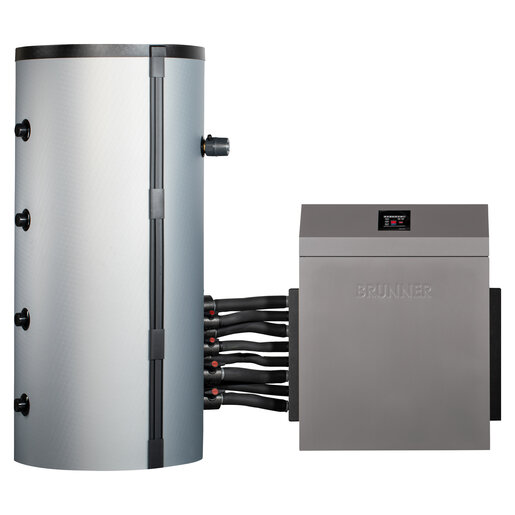
Is it good to heat with wood?
Heating with wood can be a good option to heat buildings, especially in regions where wood is readily available. One of the biggest advantages of heating with wood is that wood is a renewable fuel, and unlike fossil fuels such as oil and gas, it is not finite. As long as sustainable forestry practices are used, wood can be used as a fuel without permanently damaging forests.
However, heating with wood has other advantages as well
Another advantage of heating with wood is that it can be a relatively inexpensive option, especially if you are able to harvest wood yourself or buy it cheaply. Compared to fossil fuels, the cost of wood is usually lower, and since it can be sourced locally, there are no transport costs.
However, it is important to note that heating with wood is not always an environmentally friendly option. Burning wood can cause air pollution and contribute to the release of greenhouse gases, especially if you do not use the right equipment and fuels. One way to minimise the environmental impact of heating with wood is to use an efficient and clean wood combustion system such as BRUNNER's log boiler. These types of systems use wood as fuel and convert it into a gas through gasification, which is burnt to produce heat. This increases the efficiency of wood combustion and minimises air pollution.
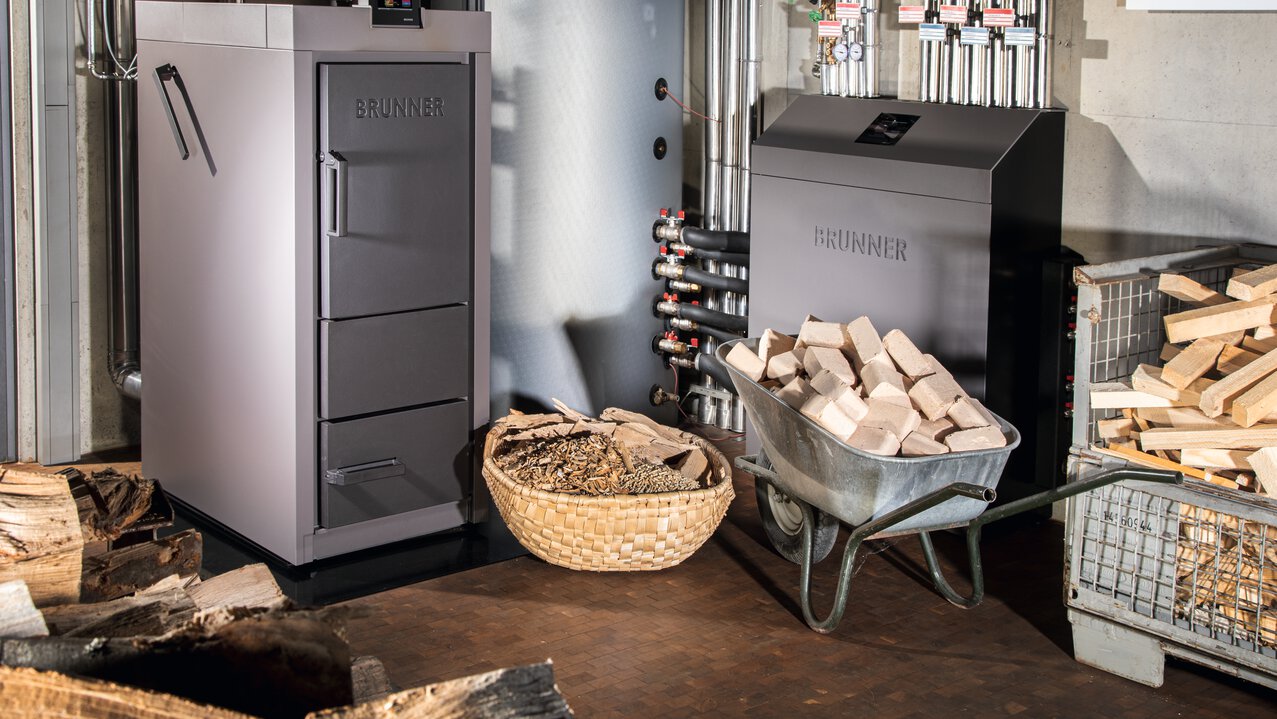
What does a log heating system with buffer storage cost?
The cost of a log heater with buffer tank depends on various factors, such as the size of the heater, the quality of the components and the installation. Here are some rough estimates of the costs that may be involved in installing a log heater with buffer tank:
- Initial cost: The cost of a log heater with buffer tank can vary greatly and depends on the size and capacity of the heater.
- Installation costs: The costs for installing a log heating system with buffer storage can also vary and depend on the size and complexity of the installation.
- Buffer tank: A buffer tank is an important part of a log heating system and helps to store the heat generated by the heating system. The cost of a buffer tank depends on its size.
- Fuel costs: Logs are a relatively cheap fuel compared to oil or gas. However, the cost of logs varies depending on location and availability and is calculated per cubic metre.
- Maintenance costs: A log heater requires regular maintenance and cleaning to maintain its efficiency and to achieve optimal performance.
In summary, depending on the size of the heating system, the quality of the components and the installation, the cost of a log heating system with buffer tank can easily amount to several 10,000 euros. It is important to seek professional advice to find the best solution for your needs and cost optimisation. We will be happy to advise you.
Is there a subsidy for wood heating systems?
Yes, wood heating systems are subsidised in Germany. There are various financing programmes and grants that support the installation of wood heating systems. The best-known funding programme is the Market Incentive Programme (MAP) of the Federal Ministry for Economic Affairs and Energy. The programme promotes the use of renewable energies and helps to achieve climate protection goals. Under the MAP, subsidies are available for the installation of biomass heating systems such as pellet heating systems and woodchip heating systems as well as log heating systems in existing buildings and new buildings. There are also subsidy programmes for wood heating at regional level in many federal states and municipalities. However, the exact funding conditions and levels of subsidies can vary from region to region. In addition to grants, there is also the possibility of obtaining low-interest loans for financing wood heating systems. The Federal Office of Economics and Export Control (BAFA) offers the programme "Energy-efficient construction and renovation - special funding" for this purpose. It should be noted, however, that the exact conditions and levels of funding vary from year to year. It is therefore advisable to find out about the current funding opportunities before purchasing and installing a wood heating system and, if necessary, to seek advice from a specialist.
Do wood heating systems have a future?
Wood heating systems have become more important again in recent years, as they are an environmentally friendly and sustainable alternative to fossil fuels such as oil or gas. The demand for wood heating has increased especially in rural areas and in areas with a lot of forest land, since wood as a fuel is often easily accessible and inexpensive. Another advantage of wood heating is the possibility to support local value chains. By using wood as fuel, dependence on imported fuels can be reduced. At the same time, local forestry and the timber industry can be strengthened, as wood as a fuel offers a sales market. However, there are also some challenges in using wood as a fuel. One possible challenge is the limited availability of wood in some regions, which can lead to higher prices. In addition, particulate matter emissions from wood heating systems can be a challenge, especially if outdated technologies are used. To overcome these challenges, BRUNNER is continuously developing and using new technologies to improve the efficiency of wood heating systems and reduce emissions. Overall, there is a positive trend that wood heating systems continue to play an important role in energy supply. The promotion of renewable energies and the need to reduce CO2 emissions will contribute to the support of wood heaters in the future. At the same time, the further development of technologies will help to further improve the efficiency and environmental compatibility of wood heating systems.
Will wood heating systems be banned?
There are no bans on wood heating systems. However, stricter limit values for particulate matter emissions have come into force since 2021, which also apply to wood heaters. New wood heating systems must comply with these limits and older systems must be retrofitted if necessary to reduce emission levels. There are also ongoing discussions about the environmental impact of wood heaters, especially with regard to the use of wood from sustainable forestry and the emission of particulate matter. However, wood heating is still considered a sensible and environmentally friendly alternative to fossil fuels and can be supported by government subsidy programmes.

